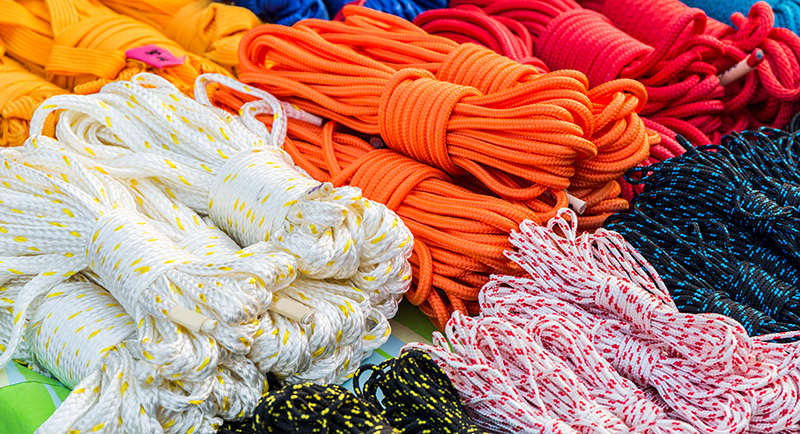
Find the right product for your needs with our Product Finder.

Synthetic fibers, which account for about half of all fiber usage, are made from synthesized polymers based on raw materials such as petroleum.
The different types of fibers are produced from widely diverse chemical compounds. Each synthetic fiber has unique properties and characteristics that suit it for specific applications.
Synthetic fibers and fabrics are used in a broad variety of industries and sectors, including aerospace, apparel, architecture and construction, automotive and transportation, chemical processing, electrical and electronic, filtration, marine, medical and welding.
Four synthetic fibers – polyester, polyamide (nylon), acrylic and polyolefin – dominate the textile market.
Polyester, the most widely used synthetic fiber, is popular for all types of clothing and for reinforcement of items such as tires, belts and hoses. Polyester fiberfill is used in pillows and high-performance outdoor wear. Carpets are commonly made of polyamide (nylon), which can be blended with elastomeric fibers to produce sportswear. Acrylic fibers have some properties that resemble those of wool, but they do not absorb water, which makes them suitable for end products such as cold-weather garments and home furnishing fabrics. Polyolefin fibers, which are made from polypropylene or polyethylene, for example, are strong, colorfast and resistant to staining, mildew and abrasion. Like acrylic fibers, they do not absorb water.
These properties allow numerous applications, including home furnishing, indoor and outdoor carpeting, automotive fabrics, industrial fabrics, safety apparel, including police and military vests, helmets, armored vehicles, and sailcloth.
Super-absorbent fibers, in contrast, can retain high quantities of water, which makes them ideal for applications ranging from diapers to self-healing concrete walls.

New developments in polymers and additives enable a wide number of properties and functions to be imparted to textiles. Technical textiles, which are primarily functional, are produced for the agricultural, automotive, protective and sports clothing, domestic and industrial sectors, amongst others. Smart textiles feature properties that are either esthetic or functional. They can light up or change color, for example.
The numerous functions that can now be incorporated in textiles include enhancement and measurement of athletic performance, heart monitoring, regulation of body temperature, and protection of the wearer against environmental hazards such as radiation.
Polymers are not inherently resistant to UV light. Absorption of radiation by any component in the synthetic fiber system can ultimately lead to degradation.
Fiber additives can prevent or inhibit the absorption of radiation and counteract degradation. They are therefore essential to synthetic fibers in the textile industry, especially those intended for outdoor applications such as synthetic turf and awnings as well as for indoor items that are exposed to light through windows, for example carpeting.
Leveraging its many years of industry knowledge and manufacturing experience, SONGWON develops, manufactures and supplies a broad variety of polymer stabilizers that protect synthetic fibers and plastics against thermal and oxidation degradation during processing and use, thereby prolonging the life of the end product. They are designed to give textile producers competitive edge and help them meet their end-use requirements. SONGWON’s product portfolio also includes thermoplastic polyurethanes (TPU) resins for films and super absorbent polymers. TPU resins combine a variety of properties that are ideal for the manufacture of films used in high-performance textile and industrial lamination applications. Superabsorbent polymers are suitable for applications requiring high water absorbency and excellent heat stability.